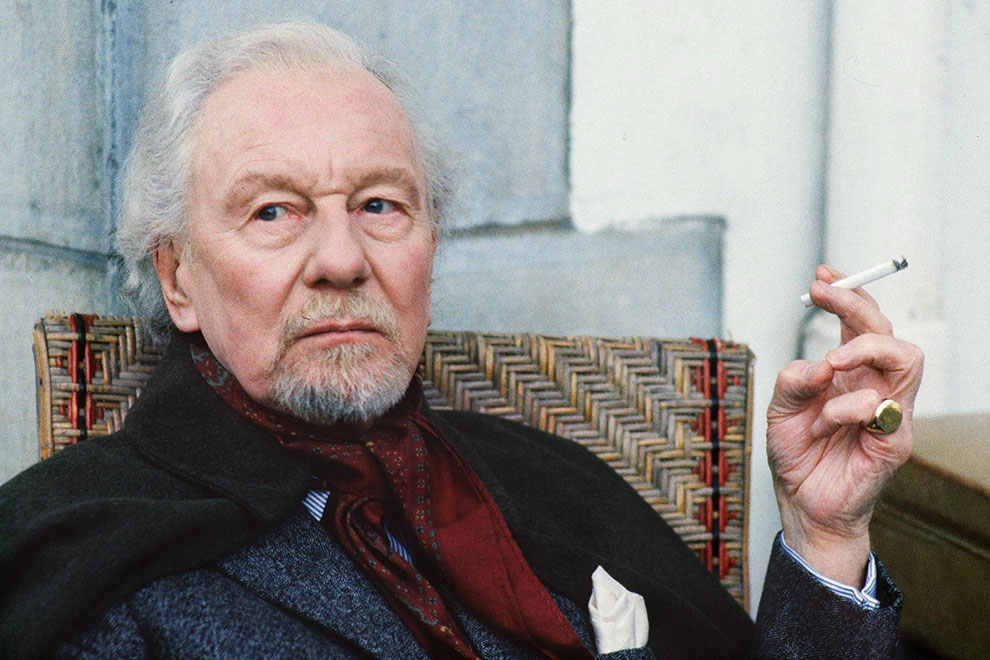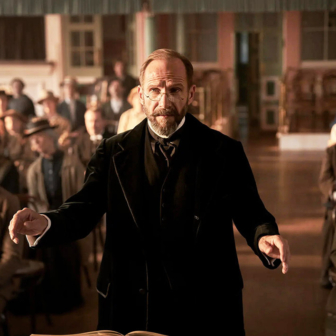In Search of Gielgud: A Biographer’s Tale
By Jonathan Croall | Herbert Adler Publishing | £10.95
Back in 2001, I was asked to review Sheridan Morley’s “authorised” biography of John Gielgud. Having already ploughed through its 457 casually under-researched, error-ridden pages, the last thing I was looking for was another biography of the great actor, which my editor wanted me to take on board as well. This was Jonathan Croall’s John Gielgud: A Theatrical Life 1904–2000, and it ran to 533 pages. To my relief and delight, though, Croall’s book struck me as setting a new benchmark in theatrical biography: its research was impeccable but lightly enough worn to ensure utter readability. If this was not the “authorised” one, I’m nevertheless sure that it’s the one Gielgud would have enjoyed reading.
Since then, as well as a magisterial study of Sybil Thorndike’s life and career, Croall has published a second Gielgud edition subtitled “Matinee Idol to Movie Star” (2011), with a good deal more material on Gielgud’s film career, much of this based on interviews with his collaborators in that medium. It says much for Croall’s gifts as a writer that reading the whole second edition was as rewarding an experience as it had been the first time round. Now, he has produced an account of the excitements and tensions and frustrations that accompanied the preparation for the first Gielgud book. It may not be like going down the mines, but the biographer’s path is not necessarily strewn with roses, as In Search of Gielgud makes clear.
What this new book offers is a fascinating account of the whole enterprise, from Gielgud’s letter agreeing to let Croall write his biography through to the post-publication reverberations. For three years, with an advance from Methuen, he tracked down and interviewed over a hundred actors, directors and others who had been associated with Gielgud, and spent untold hours watching films and TV programs in which the actor had appeared and checking out museum holdings: in a word, following up every lead. While all this was going on, he kept a detailed diary of where these leads had taken him, recording whether/how they furthered his search for Gielgud as actor and director – and as a man. At the end of most months, there is a “progress report” which records the hopes and disappointments the month has brought as Croall adds to the brilliantly accreting research bank, as well as the self-critical response that keeps us on his side as he deals with some very irritating people.
As he trawled through documents and followed up every willing interviewee, Croall was arriving at the balance between the personal and the professional that was going to be crucial to the authority of his account of an actor whose life spanned almost the entire twentieth century. It is this dual pursuit that makes In Search of Gielgud such a riveting read. We want to know about the actor – his choice of roles and how he went about them, and how his colleagues in film and theatre recalled him in rehearsal and performance – as much as about the person. It is the fact that the person was an actor (and, in this case, often a director as well) that accounts for much of our interest in reading about him in the first place. When reading the biographies, I remember being struck by the vivid detail in which the acting career was rendered, and reading this new book I see how it came about.
Though In Search of Gielgud is cast in diary form, with the month-by-month, often day-by-day, jottings of Croall’s literary life over those years, the whole book hangs together with some of the narrative grip of a novel. This is due to recurring strands of idea and tension that confer on the diary entries a kind of dramatic coherence. For instance, the tiresomeness of Croall’s dealings with his publisher. Anyone who has ever had the experience of trying to catch the wandering attention of an editor who seems to have anything other than one’s book on his mind at any given moment will feel an immediate empathy with Croall’s growing exasperation. He would send off chapters to his editor at Methuen and wait for weeks at a time for any response to this, or to other queries about, say, advance payments or word length or submission dates. Croall maintains more circumspection than many of us would muster, allowing that some of the editor’s comments are “helpful” (though some are patently “absurd”), but even he finds his patience wearing very thin. The whole drama of working with a less-than-reliable publisher is an ongoing focus of interest throughout the book.
Another feature that helps knit the book together is the conflicting image of Gielgud and his illustrious contemporary Laurence Olivier. The index has about forty references to “Larry,” most of them not redounding to his credit. The actor Frank Thornton, who’d played in Gielgud’s wartime production of Macbeth, summed up the contrast between the two acting giants by saying, “Olivier served himself, Gielgud served the play.” And on the matter of their respective approaches to the speaking of Shakespearean verse, the National Theatre voice coach, Patsy Rodenburg, discriminated thus: “Olivier broke the rules more, which was very exciting, but Gielgud was much more emotionally connected to the text.” On a personal level, Derek Granger, one of Olivier’s biographers, said of Gielgud, “Socially he didn’t want to dominate, unlike Larry, who got very annoyed if anyone had a conversation away from him… [Gielgud] seems a very whole person, whereas with Larry you have a sense that everything is directed to his work.” There’s a good deal more in relation to what Croall calls “the inevitable Gielgud/Olivier comparison,” and it accounts for one of the threads of character interest as Croall records the insights his interviewees give him.
One troubling issue for the author is the difficulty he felt in wondering how far he could rely on Gielgud. He had Gielgud’s permission to write the biography, even though Morley laid claim to writing the “authorised” life. Croall seemed always constrained by a sense of personal decency. When Gielgud’s partner, Martin Hensler, died in 1999, Croall feared this might be fatal for Gielgud, “especially if he’s unable to work. What else does he have to live for?” Much as he would like to send Gielgud some of his script, he senses that this might “create more problems” at this unhappy time. Instead he turns to viewing several of the actor’s films and pursuing other interviews, including a lively one with actress Sarah Miles.
If the dealings with the Methuen editor were frustrating enough, those with the egregious Morley went well beyond frustration. Forever brandishing his “authorised” biographer label, he did all he could to hinder Croall’s book, casting doubt on the fact that Gielgud had given his permission for it to go ahead. On an occasion when they turned up on the same talk show, Morley was not constrained by anything approaching decorum or good manners. The entry for 23 September 1998 begins with “A Morley missile” and records the “bluff and intimidation” of the letter in which he viciously and erroneously claims he has a letter from Gielgud asserting that Croall has no right to do the book and that those he has already interviewed will withdraw their permission for him to quote them. Morley is no doubt anxious about the possibility of Croall’s book appearing first, and throughout In Search of Gielgud there are instances of threats of various kinds from Morley.
Apart from being scandalously careless about matters of fact, adjusting quotes to suit his needs, and self-regarding to boot, Morley gives the impression in his book that the highlight of Gielgud’s life was the “cottaging” incident. He treats this sad episode in the actor’s life with salacious eagerness under an unconvincing guise of believing that “the greatest thing Gielgud did aside from his acting and directing career was to change the law governing homosexuality.” As Croall reports, Morley couldn’t even get right the details of the charges against Gielgud. More than a decade later, there can be no question as to which biographer deals more sympathetically – and accurately – with this painful episode in Gielgud’s life.
But though such matters as these provide a dramatic continuity in Croall’s book, they are by no means the chief pleasures it has to offer. One such is the fabulous cast of interviewees who were prepared to share with the author their impressions of working with Gielgud in film or theatre, and it’s not just his recording of the information and insights they offer that accounts for their contribution to the biographer’s quest. That is certainly valuable, but as well what is disarming is the way these starry names emerge as people in their own right. If you’ve wondered what it was like to meet, say, Peter Brook or Simon Russell Beale or Phyllis Calvert or Dirk Bogarde, then you’ll get some revealing glimpses of them here. I particularly relished his meeting with Margaretta Scott, “once a leading actress and now eighty-six.” Having once interviewed her myself and been a little in awe of the prospect of meeting this dark and dangerous beauty, I was pleased to read Croall’s comment: “I had thought her a bit intimidating from her photos, but find her gracious and welcoming,” just as I was to note his hour with Dorothy Tutin, of whom he writes: “She was the pin-up of my youth, so there’s an extra frisson, which I hope I conceal.”
There is a great deal of gratified curiosity in reading of Croall’s encounters with these and many others, but it is his own insight, wit and judicious appraising of his sources that ultimately hold this enterprise together. If it never seems like a mere listing of “what I did today” over three years, this is essentially because the author’s own voice inducts us into the processes of collecting evidence and weighing the value of what he has found. It is a voice we can trust. Further, what is on offer here is a potent sense of the intellectual labours involved in the making of a great biography. For those who have admired either or both of Croall’s two Gielgud biographies, there is the gratification of understanding how they came to be – and how they came to be so impressive. •




